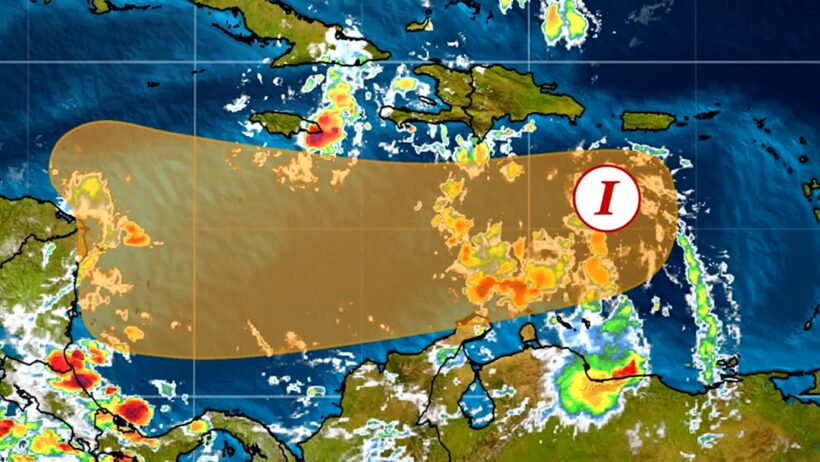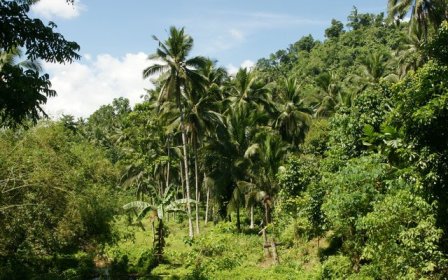Central America represents a strikingly vivid tapestry of climatic variations, interwoven with the pulsating rhythms of tropical weather. Nestled between the Pacific Ocean and the Caribbean Sea, this geographical corridor boasts an awe-inspiring biodiversity, akin to a treasure chest bursting at the seams with natural wonders. From verdant rainforests to arid coastal plains, the climate of Central America is a multifaceted phenomenon that significantly influences the region’s ecology, economy, and the broader implications of climate change.
The central climatic feature of the region is its tropical climate, characterized by minimal temperature fluctuations across the year. This consistent warmth, akin to the embrace of a nurturing guardian, aptly fuels the region’s lush ecosystems. Average temperatures generally hover between 20°C and 30°C (68°F to 86°F). This seemingly temperate embrace does not reveal the intricacies of the atmospheric dance that defines Central America’s weather patterns.
The geographic disposition of Central America plays a pivotal role in shaping its climatic behavior. The region is threaded with mountain ranges, including the rugged Sierra Madre and the volcanic peaks that punctuate its topography. These elevations create microclimates, akin to nature’s own artisanal blends. For instance, as moist trade winds sweep in from the Caribbean, they ascend these mountainous barriers, leading to orographic uplift. The result: copious rainfall on the windward slopes, transforming them into verdant rainforests that are teeming with life. Conversely, the leeward sides often experience a rain shadow effect, inducing aridity that starkly contrasts with their humid counterparts.
Climate seasons in Central America can be substantially defined by the distinctive rainy season and dry season. The wet season typically stretches from May to November, during which the region is graced with torrential downpours. This period not only invigorates the region’s flora and fauna but also serves as an essential lifeblood for agriculture, which constitutes a significant portion of the economy. However, the heavy rains carry with them the looming shadow of natural disasters. Flooding, landslides, and even the risk of tropical storms become pertinent concerns, reminding the populace of nature’s dual face: both nurturing and terrifying.
Conversely, the dry season, ranging from December to April, bestows a different hue to the landscape. The sun reigns unapologetically, casting a golden sheen over the earth. As the landscapes dry, the flora adapts, exhibiting resilience and enduring beauty. During this time, the region’s unique biodiversity, which includes endangered species and economically vital crops, faces additional pressures. Water scarcity emerges as a critical challenge, emphasizing the interdependence between climate patterns and ecological health.
Central America is also an intricate web of ecosystems, each uniquely adapted to its climatic conditions. The Caribbean coast, with its mangroves and coral reefs, serves as a nursery for myriad marine species. Mangroves are vital, acting as coastal buffers against storm surges and erosion while also sequestering carbon, thereby playing a role in mitigating climate change effects. The juxtaposition of water-rich environments against the backdrop of mountain ranges creates a nurturing cradle for a treasure trove of biological diversity.
However, the innate beauty and vibrancy of Central America’s climate are under siege. Climate change poses a spectral threat, manifesting in increased frequency and severity of extreme weather events. The consequences ripple beyond environmental degradation, affecting agricultural yields, water security, and the livelihoods of millions. Rising sea levels threaten coastal communities, while altered precipitation patterns jeopardize food production—one of the region’s mainstays. This paradigm shift renders the previously predictable climate increasingly capricious.
Moreover, deforestation sits ominously in the backdrop, exacerbating climate vulnerabilities. The relentless march of agricultural expansion and urbanization gnaws away at the natural cover that once moderated temperatures and preserved biodiversity. The rainforest’s sentinels, the towering trees, serve as vital indicators of climate health. Their disappearance not only reduces biodiversity but exacerbates carbon emissions, creating a vicious cycle detrimental to both the environment and human health.
In the face of these escalating concerns, there lies a clarion call for sustainable practices that harmonize human needs with environmental stewardship. Agroforestry, reforestation, and conservation efforts can pave pathways to resilience. Coupled with community engagement and education, these measures foster a collective responsibility toward safeguarding Central America’s climate and its rich biosphere. Innovation in sustainable agriculture can bridge gaps caused by climate-induced disruptions, promoting food security while respecting the ecological balance.
In conclusion, the climate of Central America is a dynamic interplay of natural elements that sustains a remarkably diverse and vibrant ecosystem. Yet, the intricacies of this climatic wonder are increasingly threatened by anthropogenic activities and climate change. For Central America to maintain its status as a biodiverse hotspot, integrated approaches that prioritize sustainable development and environmental conservation must be championed. Only then can the region hope to mitigate the harsh realities posed by shifting weather patterns and safeguard its invaluable ecological heritage for generations to come.








